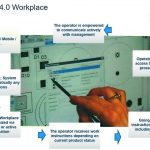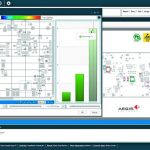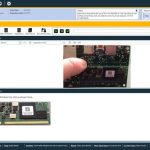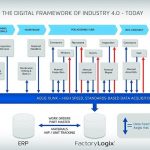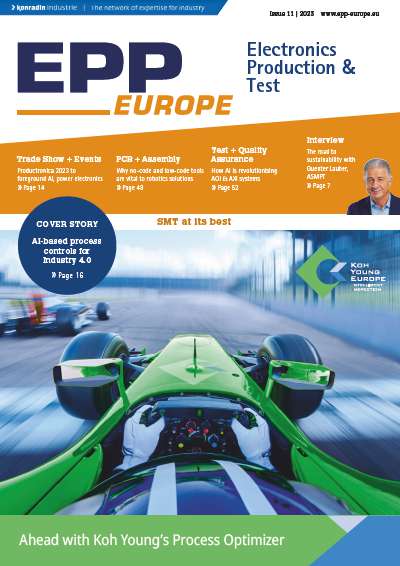Exceeding the principle of “Smart” factory, new communication technologies will be required for the exchange of data in order to link humans with the other systems. Afterwards, all information in this established Industry 4.0 environment is used in an intelligent way, where it will result in continuous improvements regarding efficiency, flexibility, and quality.
New challenges for humans
In the case of machines communicating with each other, the exchange of information via appropriate interfaces by using the latest technology and standardized reports, is the greatest challenge. According to their scope of application, machines follow standardized patterns while implementing processes and procedures. The concept of Industry 4.0 now shifts the additional decision-making competences to the process flows, in order to create production flows that more or less optimize themselves. However, extensive standardization for the exchange of data and the processing of large volumes of data is a prerequisite thereof. The entire industry already faces this challenge internationally and provides first approaches to tackle it.
What requirements result for the staff thereof? All participants have to be integrated into the concept of Industry 4.0. Smart production planning, process definition. Manual process steps have to also be consciously included in this concept and shall be understood as part of an overall solution. Manual processes are significantly important when included in automated systems. The whole concept of Industry 4.0 will fail if manual processes are not integrated. Due to economic reasons, it has to be assumed that manual activities shall remain an integral part of state-of-the-art manufacturing operations, in particular when it comes to highly flexible and complex assemblies. In the following, first solution approaches are presented which demonstrate an integration of manual activities into Industry 4.0 concepts.
The smart workplace in the environment of Industry 4.0
A crucial aspect for the Industry 4.0 factory is how all relevant process and quality data are collected, processed, and provided. The Aegis solution meets the challenges that an Industry 4.0 solution requests from a system for the smart workplace of the future, with both its IT infrastructure and its software concept. In the field of communication, international standards have already been implemented in order to standardize and thus facilitate the information exchange between machines and systems. How is the smart human workplace integrated now? Initially, a process description is required that is independent from the workplace and has the ability to dynamically react upon changes in the workflow. As soon as a part is checked in at a workplace, the company’s system will monitor if it is at the correct workplace, and if so, what has to be done with it and if there are any additional test steps still missing. At the same time, the underlying workflow concept remains as flexible as possible, in order to allow for a smooth procedure through production.
This means, however, that the work plan has to be updated permanently and thus does not follow the outdated, rigid specifications of an ERP. The system is controlled via centralized server instances, which can cope with large volumes of data based on modern scaling methods. This data model, as well as, all operation and testing procedures, are always directly linked with the technical CAD model of the product. Additionally to the product, there is the process model, which contains the process and test parameter. Only by intelligently combining these two different types of information, a complete and usable image unfolds, regarding both the product progress, as well as, the product quality. Thus, the right data is made available to the operators and the management, at the right place and at the right time. Each employee can retrieve information graphically or via „drill-down“ mechanisms with the support of the company’s CAD intelligent data model and is hereinafter automatically forwarded to the necessary process steps. The workplaces should be equipped with touchscreens, where each employee logs in. Subsequently, all available job orders are displayed on the screen. The product though decides which process step the employee has to follow upon arrival at his or her workplace. Any important engineering notes and instructions that have to be taken notice of, observed, and reported, are immediately displayed on the screen. This ensures that any amendments made between the commencement of the order and the processing thereof are dynamically included in the current work process. Conventional methods of both production and progress planning would completely fail here. All materials with their specific characteristics that are included in the process flow are monitored as well. In the background of material inspection, the Approved Manufacturer Lists (AML) are consulted to check the current release and quality data of each part. Any alterations regarding the characteristic of material and/or process specifications are discovered at once and can be reacted upon immediately. The employee should therefore be included in the communication network. Rigid and inflexible work instructions in written form are outdated in the age of Industry 4.0 and are not in accordance with the requirements of the new communication technology.
The approach to meet this challenge is to simply take into consideration the diversity of human information processing. The Industry 4.0 concept can integrate manual production processes, if the work descriptions and job orders can be implemented flexibly depending on the user.
Another characteristic of the Industry 4.0 approach lies in the dynamic process flow. Workpiece carriers or products actively pass through the production facility and self-optimize while going towards the next production and assembly step. While doing so, the products actively submit inquiries to the machines and bring themselves to the next available workplace. Process ability and machine set up are taken into consideration together, along with approvals and machine capacity. If these requirements are transferred to the manual process steps, similar challenges to the human machine communication arise. The product asks for an appropriate manual process step. Finally, only appropriate workplaces with adequately qualified staff are selected. The human machine interface will show the employee which tasks have to be done and, if necessary, takes into account the required qualifications of the employee.
Conclusion
With its unique combination of a dynamic data model and paperless documentation, a modern IT concept can achieve the expected improvements for the smart workplaces with respect to productivity and quality. Additionally, the integrated quality data collection system improves the operator’s error management, as all data is made available via reports, based on which appropriate measures implemented. The customer profits from this modern Industry 4.0 solution, as well as, continuously improved products that are offered. The Industry 4.0 operation system is regularly updated and expanded by the company. At the moment, first operations with an integrated logistic approach are running, in order to also prepare the material flow for the concept of Industry 4.0.
productronica, Booth A3.340
Zusammenfassung Résumé Резюме
Grundsätzlich besteht ein moderner Fertigungsbetrieb nach Industrie 4.0 Standard aus einer Vielzahl von intelligenten Elementen wie Maschinen, Operator, die Fabrik oder sogar das Material. Digital gesagt bedeutet dies, dass alle diese Elemente in der Lage sind, Daten zu lesen, zu speichern, zu übertragen und zu reagieren. Damit dies funktioniert, wird die Industrie 4.0 Fabrik sowohl mit ihren Kunden als auch Lieferanten vernetzt. Im Artikel werden Kommunikationstechnologien für die smarte Fabrik vorgestellt.
D’une manière générale, une entreprise de fabrication moderne selon la norme Industrie 4.0 se compose d‘une variété d‘éléments intelligents tels que les machines, les opérateurs, l‘usine ou même le matériel. Digitalement, cela signifie que tous ces éléments sont capables de lire, de stocker, de transmettre et de répondre aux données. Pour que cela fonctionne, l‘usine Industrie 4.0 est en réseau avec ses clients et ses fournisseurs. L‘article présente les technologies de communication pour l‘usine intelligente.
В соответствии со стандартами Индустрии 4.0 современное производство должно включать в себя большое количество «умных» элементов, таких, как, например, оборудование, операторы, фабрика или даже сырье. В терминах цифровой техники это означает, что все элементы должны уметь считывать, запоминать, передавать данные и реагировать соответствующим образом. Чтобы это все работало надлежащим образом, фабрика, отвечающая стандартам Индустрии 4.0, объединяется в рамках общей сети со своими клиентами и поставщиками. В статье рассматриваются коммуникационные технологии для «умных» фабрик.


